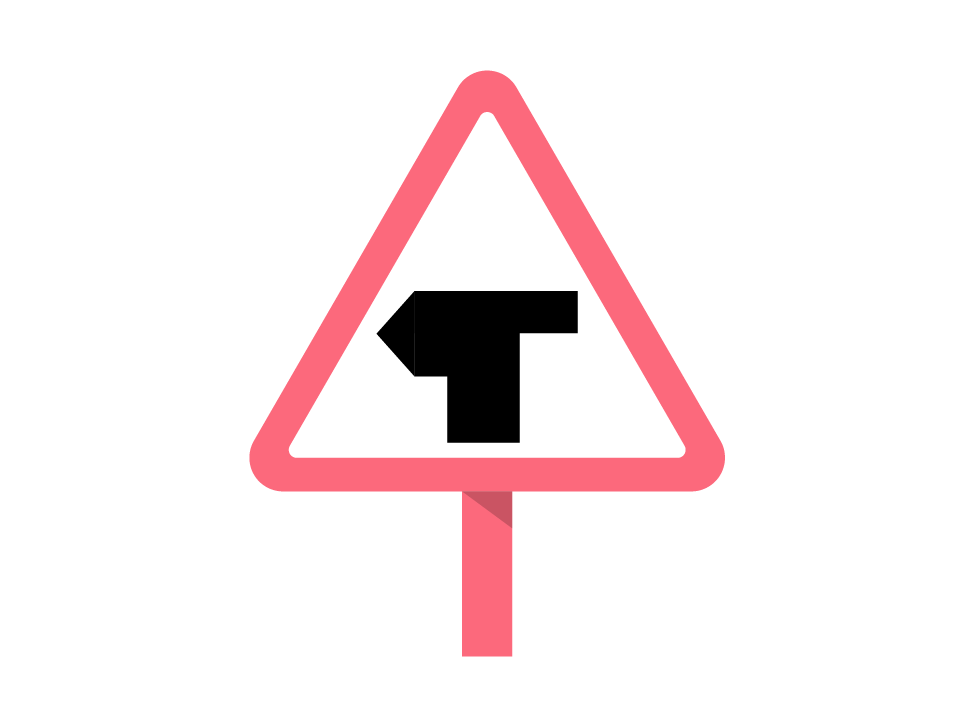How to tackle T-junctions
When you’re learning to drive, one of the things you’ll inevitably have to tackle is a T-junction. They can be a little intimidating when you’re starting out on your journey. Not to worry, we’re going to run through how to recognise the T-junction sign and how to emerge safely at a T-junction.
What are T-junctions used for?
T-junction sign
The first step to nailing T-junctions is being able to recognise the T-junction sign. Knowing your T-junction road sign will help you get prepared so you can approach the junction safely.

The T junction sign is a red triangle because it’s a road sign that’s warning you of an upcoming hazard. The right of way is shown by the direction the thicker line is pointing in.
- Check your mirrors and your blind spots
- Signal with plenty of time before you get to the junction
- Get in the correct position on the road
- Slow down as you approach the junction and get into the right gear
- Observation at the junction – make sure the road is clear
- Move swiftly once you’re sure it’s safe for you to go
How to emerge at different types of T-junctions
As you approach the T-junction, you’ll need to figure out whether it’s an open or a closed junction.
Closed junctions
Closed junctions are junctions where the view of the road ahead is obscured by something; whether it be trees, bushes or houses. At closed junctions, you’re likely to have to come to a complete stop before moving off.
At some closed junctions, there may even be a stop sign. If there’s a stop sign, by law you’ve got to come to a complete stop. You can’t just slow down, you’ll need to come to a total stop before moving off in first gear.
